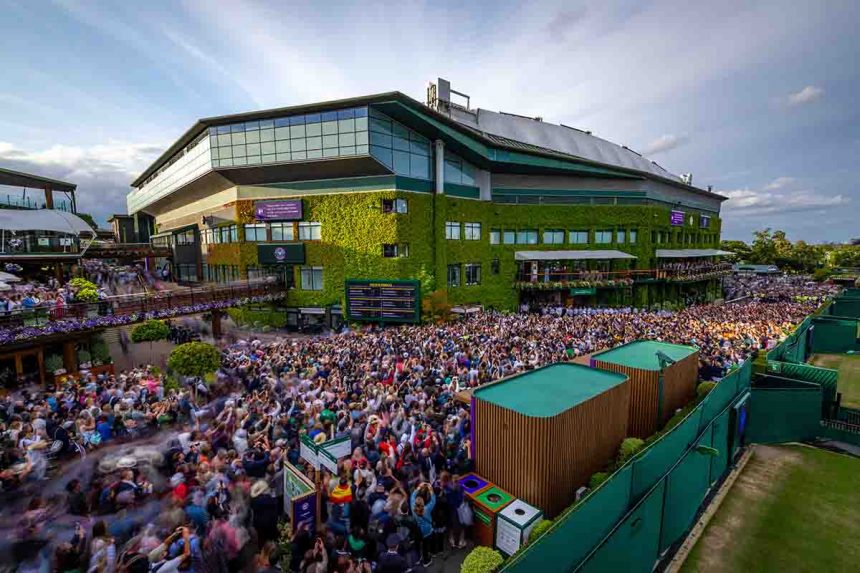Wimbledon yesterday and today, history of the world’s most prestigious tennis tournament, between tradition and sport
With its origins dating back to 1877, Wimbledon has grown to symbolise not only the pinnacle of the sport of tennis, but also a quintessentially British cultural event that is intertwined with the history and traditions of the United Kingdom. The relationship between Wimbledon and the Royal Family further amplifies its importance, adding a layer of royal glamour and historical depth to the sporting event.
The origins and evolution of Wimbledon
Wimbledon, officially known as The Championships, is the oldest tennis tournament in the world. It was first held in 1877 at the All England Croquet and Lawn Tennis Club in Wimbledon, London. The tournament started with only 22 players in the Gentlemen’s Singles competition and has since evolved into a two-week extravaganza featuring five main events: Gentlemen’s Singles, Ladies’ Singles, Gentlemen’s Doubles, Ladies’ Doubles, and Mixed Doubles. Across the years Wimbledon enriched its offer with many different tournament involving former players ready to play for fun or to raise money for charity reasons.
People try to attend to a Wimbledon game sometimes for years. Buy a ticket it’s not easy: and it’s not a simple question of money. To live Wimbledon unique atmosphere as a spectator sometimes is necessary be patiently in a virtual row that includes dozens of thousands of fans: a lottery puts on line some popular ticket and only the lucky winners can join Wimbledon’s stands, a once in a lifetime dream.
Grass Courts and White Attire
What sets Wimbledon apart from other Grand Slam tournaments is its strict adherence to tradition. It is the only major tennis tournament still played on grass, a surface that requires a unique blend of skill, speed, and agility. Additionally, players are required to wear predominantly white attire, a rule that harkens back to the tournament’s early days and emphasizes the tournament’s commitment to maintaining its historical identity.
The All England Club
The All England Club, with its meticulously maintained grass courts and iconic facilities like Centre Court and No. 1 Court, provides a picturesque setting that enhances Wimbledon’s allure. The club’s dedication to preserving the tournament’s traditions while incorporating modern advancements ensures that Wimbledon remains both timeless and relevant.
Wimbledon and the Royal Family: A Historical Bond
The Royal Family’s association with Wimbledon dates back over a century, contributing to the tournament’s prestige and cultural significance. The patronage began with King George VI, who was a frequent attendee along with Queen Elizabeth. This tradition of royal attendance has continued with successive generations, including the current monarchs.
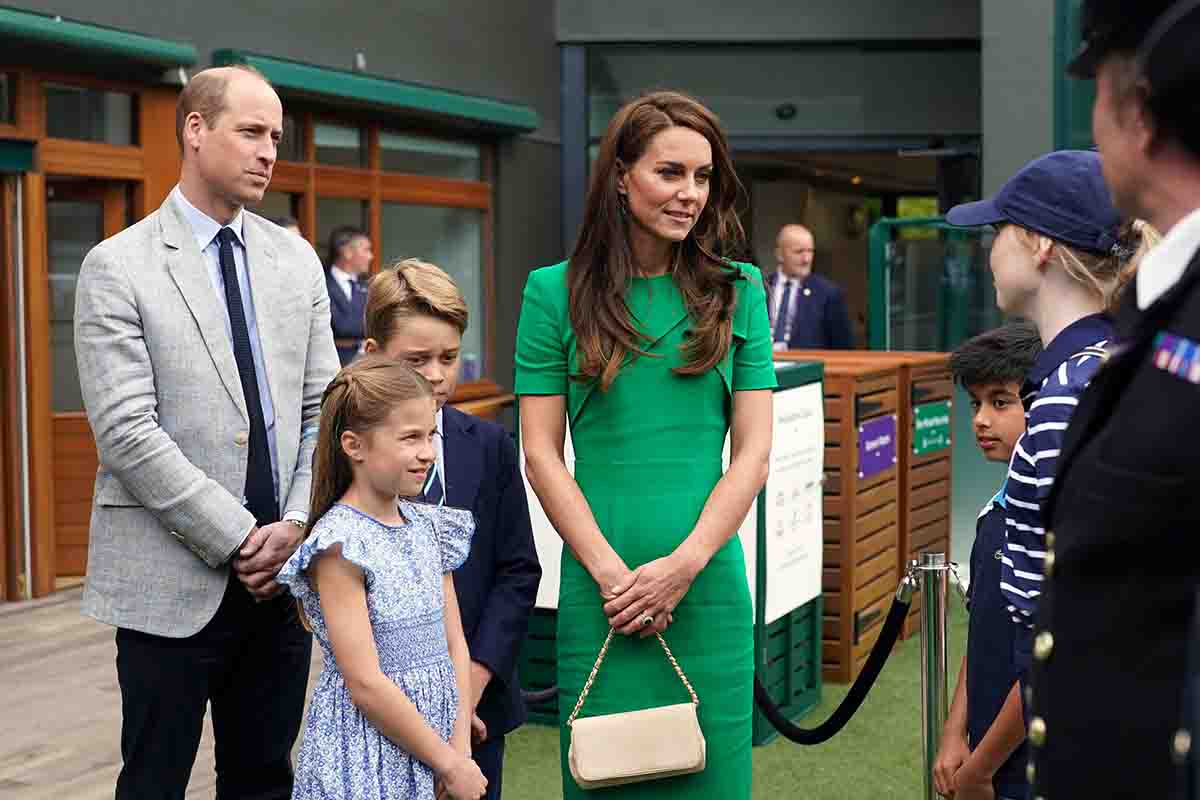
The Royal Box
One of the most iconic features of Wimbledon is the Royal Box on Centre Court. Reserved for members of the Royal Family and their guests, the Royal Box offers a prime viewing location and adds an element of glamour and pageantry to the tournament. The presence of royalty at Wimbledon not only attracts global attention but also underscores the event’s importance in British culture.
Throughout the years, there have been numerous memorable moments involving the Royal Family at Wimbledon:
1957: Queen Elizabeth II presented the Ladies’ Singles trophy to Althea Gibson, the first African American to win the title, marking a significant moment in both sports and social history.
1977: The Queen attended the tournament to celebrate its centenary and witnessed Virginia Wade’s victory in the Ladies’ Singles, making her the last British woman to win the title.
2001: The Duke and Duchess of Cambridge, Prince William and his beloved wife Kate Middleton, have become regular attendees, often seen engaging with the players and the public, further enhancing the tournament’s appeal. This year everyone is waiting for the Royal couple considering a very peculiar moment due to Kate illness during these very last months.
Wimbledon and The Princess of Wales: A Modern Royal Connection
The princess of Wales, Kate, has played a significant role in continuing the Royal Family’s connection with Wimbledon. As the patron of the All England Lawn Tennis and Croquet Club since 2016, she has been a prominent and enthusiastic presence at the tournament. Her passion for tennis and regular attendance, often accompanied by her husband Prince William, helps to bridge the historical with the contemporary, ensuring that the Royal Family’s relationship with Wimbledon remains strong and visible.
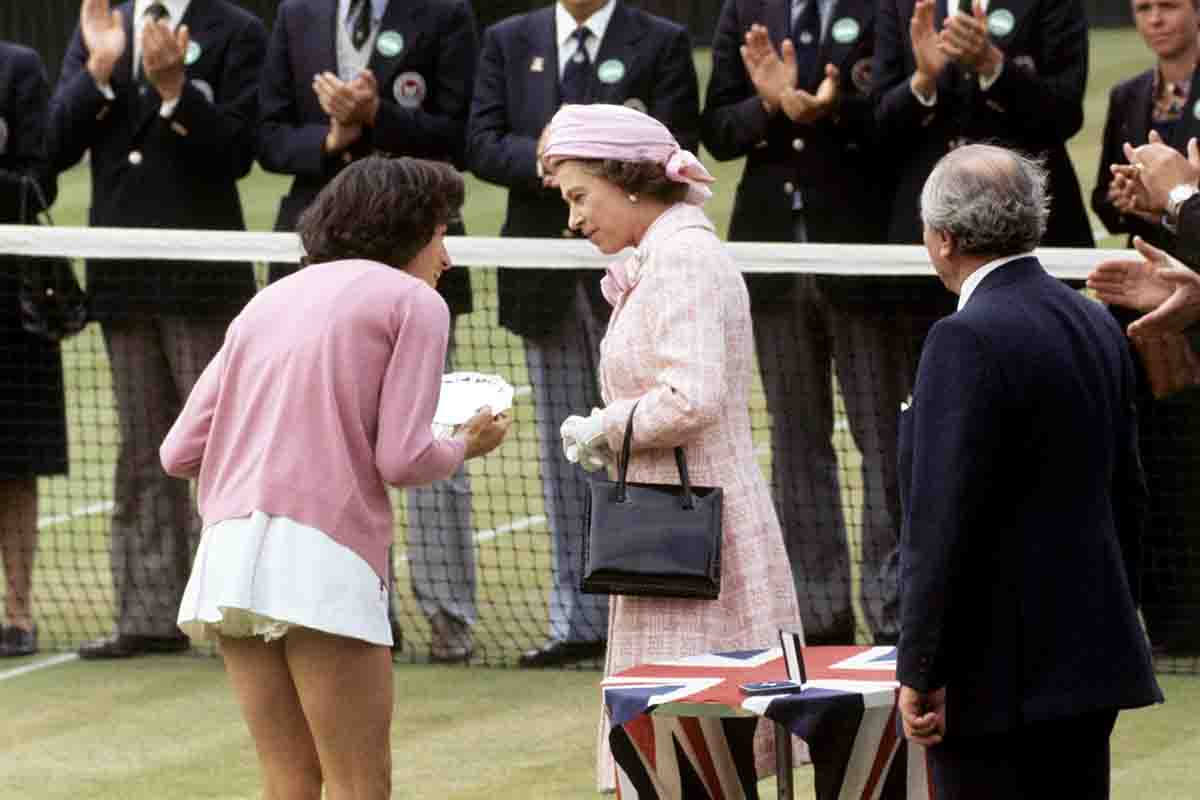
Prestige and Tradition
Wimbledon is universally regarded as the most prestigious tennis tournament, a reputation built on its rich history, unique traditions, and the high level of competition. Winning Wimbledon is considered the ultimate achievement in tennis, often referred to as “the Holy Graal” of the sport.
Wimbledon history matches and players
Wimbledon has been the stage for some of the most legendary matches and has seen the rise of tennis greats:
Bjorn Borg vs. John McEnroe (1980): Their epic final, known for its dramatic tie-break, remains one of the most memorable matches in tennis history.
Roger Federer vs. Rafael Nadal (2008): Often cited as the greatest match ever played, Nadal’s victory over Federer in a five-set thriller is etched in the annals of sports history. A five hours match. Somebody says this has been the most entertaining tennis match ever…
Martina Navratilova: With nine Ladies’ Singles titles, Navratilova’s dominance at Wimbledon is unparalleled, showcasing the tournament as a stage where legends are made. No other tennis player can show nine trophy lifts on Wimbeldon Centre Court.
Wimbledon: innovations and progress
While deeply rooted in tradition, Wimbledon has also embraced innovation. The introduction of the retractable roof on Centre Court in 2009 and on No. 1 Court in 2019 ensures play continues despite the unpredictable British weather. This blend of tradition and modernity helps maintain Wimbledon’s status as a premier sporting event.
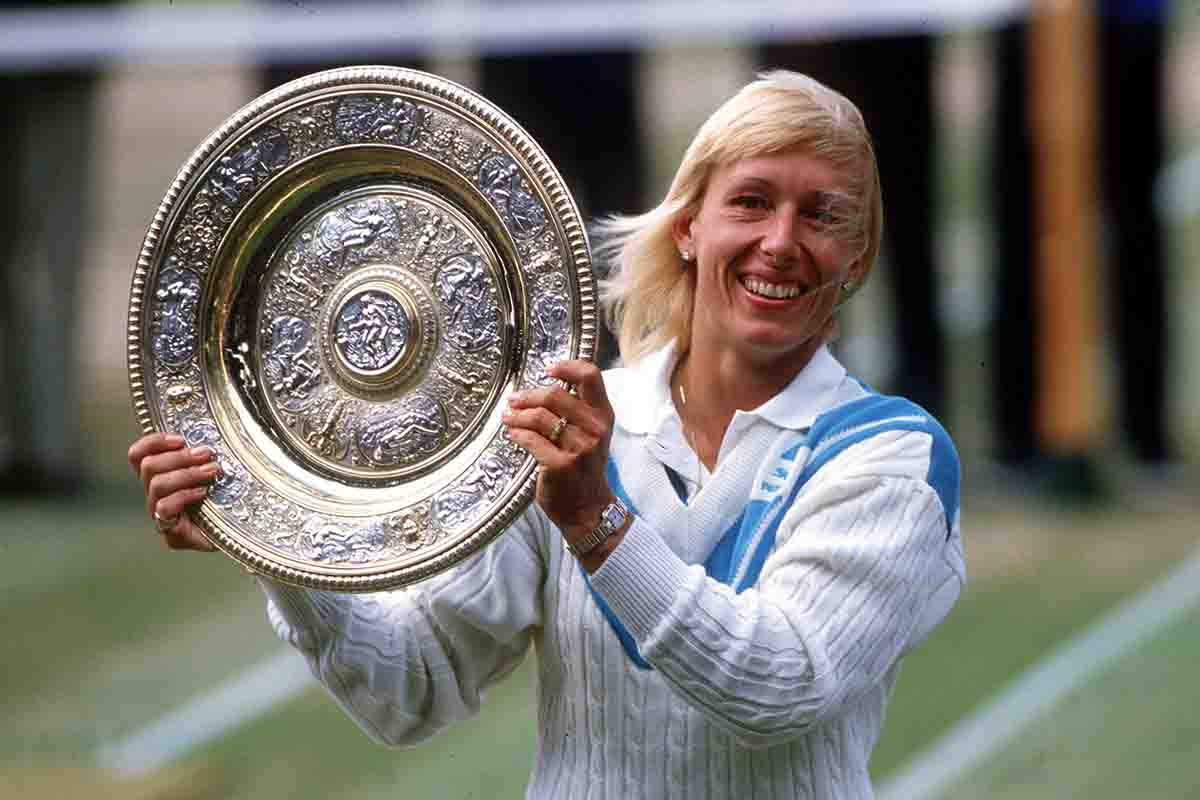
Wimbledon and Its Global Impact
Media and Broadcasting
Wimbledon’s global reach is immense, with millions of viewers tuning in from around the world. The BBC has broadcasted the tournament since 1937, making it one of the longest-running sports broadcasts. This extensive coverage ensures that Wimbledon remains a key event in the global sports calendar.
Economic and Cultural Significance
The tournament significantly boosts the local economy, attracting thousands of visitors to London each year. Beyond economics, Wimbledon holds a cultural significance, representing British heritage and sportsmanship. The tradition of strawberries and cream, the ceremonial bow to the Royal Box, and the pristine grass courts all contribute to a unique cultural experience that transcends sport.
Social Initiatives and Inclusivity
Wimbledon has also been at the forefront of social initiatives and inclusivity in tennis. The tournament has made strides in promoting gender equality, with equal prize money awarded to men and women since 2007. Initiatives like the Wimbledon Foundation work towards community engagement and support, reflecting the tournament’s commitment to social responsibility.
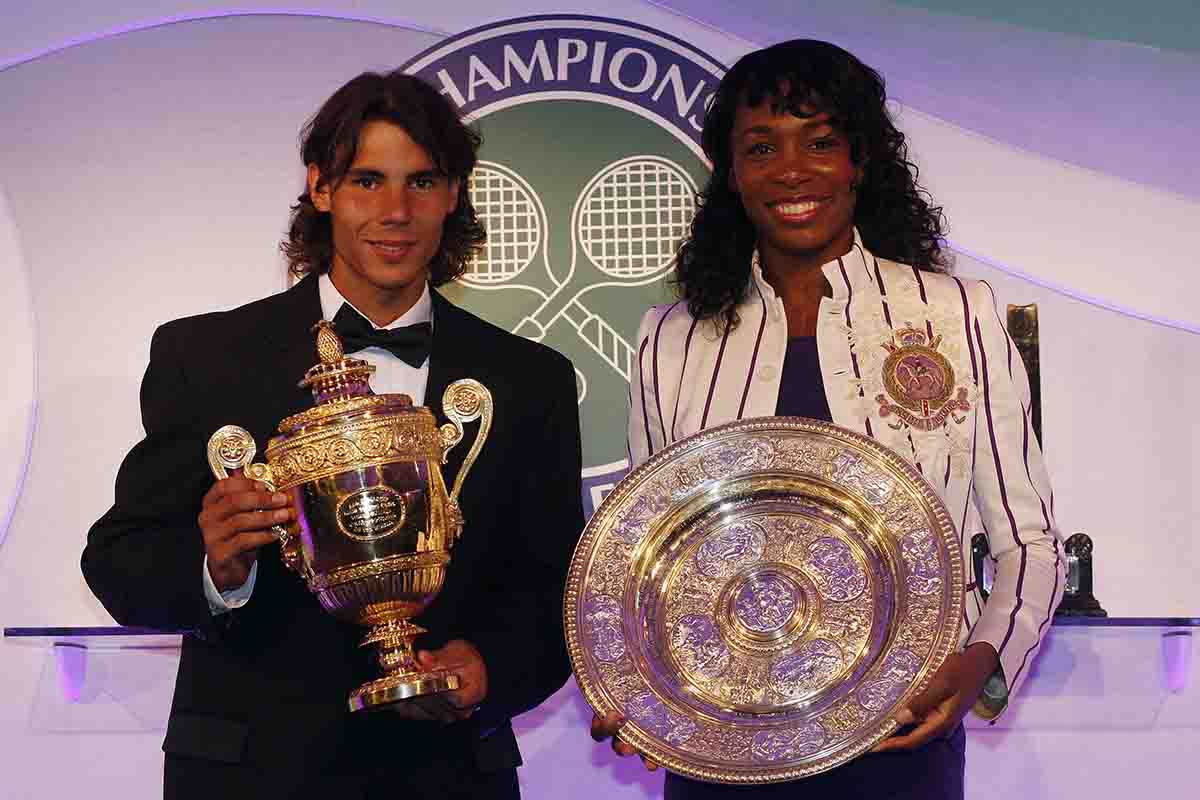
Looking Ahead: Wimbledon’s Future
As Wimbledon looks to the future, it faces the challenge of balancing tradition with modernity. The All England Club’s ongoing efforts to enhance facilities, improve player experiences, and engage with a global audience demonstrate a forward-thinking approach while preserving the tournament’s historical essence.
The continued involvement of the Royal Family will undoubtedly remain a cornerstone of Wimbledon’s identity. The younger generation of royals, particularly the Prince and Princess of Wales, play a crucial role in maintaining this connection, ensuring that the tournament’s regal charm endures for future generations.
Wimbledon’s commitment to embracing diversity and globalization will be key to its future success. By fostering an inclusive environment and celebrating international talent, the tournament can continue to lead the way in promoting tennis worldwide.
Wimbledon today
Wimbledon stands as the epitome of tennis excellence, a tournament where tradition meets innovation and sport intersects with culture. Its deep-rooted relationship with the Royal Family adds a unique layer of prestige and history, making Wimbledon not just a sporting event, but a symbol of British heritage and global sportsmanship. As the tournament continues to evolve, it remains steadfast in its commitment to excellence, ensuring that Wimbledon will always be the most important and celebrated tennis event in the world.

